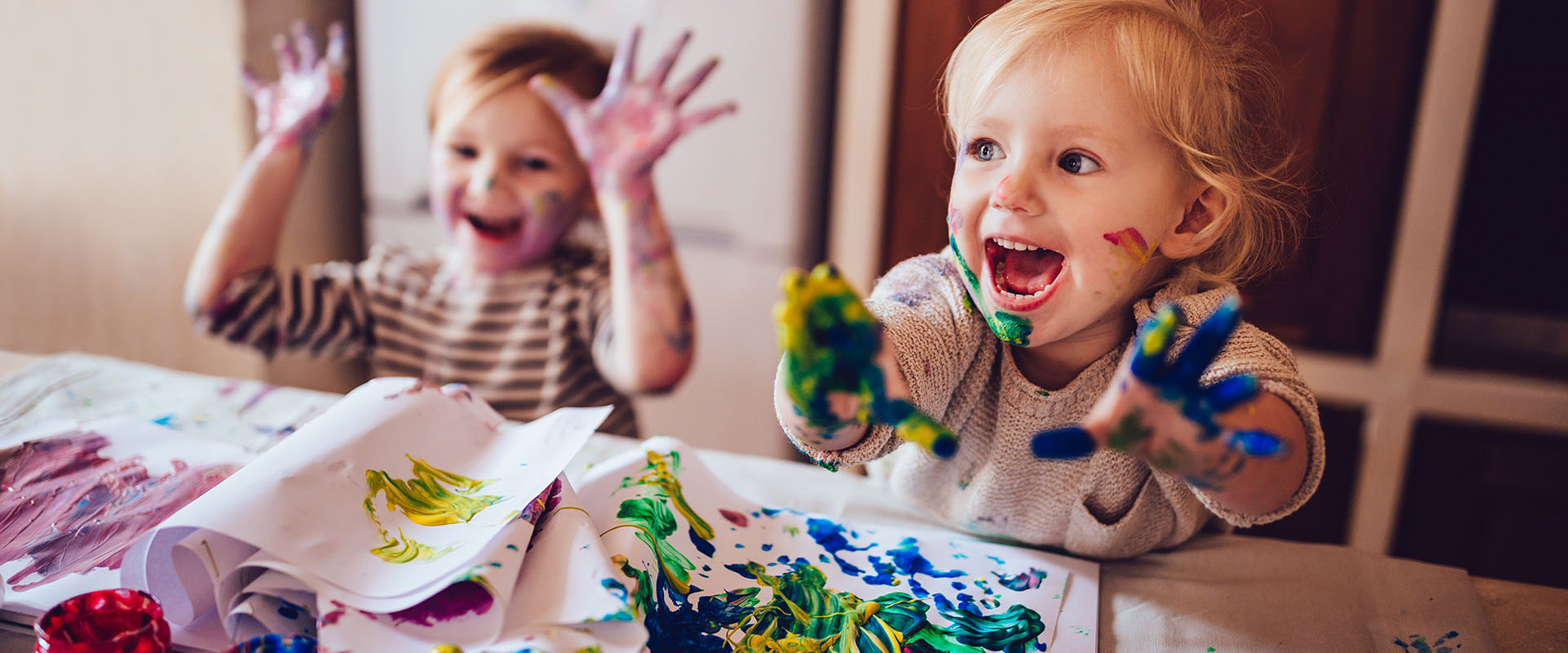3 Homemade Gifts Your Child Can Make

From growing a flower to baking a cake, or experimenting with paint and collage, these ideas have educational benefits for your child, as well as providing a wonderful gift for a special person in their life.
Planting a Seed
Give a gift that keeps on growing! Not only will your child enjoy planting and watching their seed grow, but the recipient will take pleasure in knowing it’s been grown especially for them. Discover how to grow a sunflower here.
How this activity supports knowledge and development:
Linked to our Green Gardeners programme, this activity provides a fun way for your child to learn more about the world around them. Growing plant seeds with your child teaches them how nature works, gives them responsibility in caring for something, an interest in the environment, and pride in themselves for the results.
As your child watches their seed grow, talk to them about what it needs to grow big and strong. Help them to understand the importance of taking care of it and link it back to what they need to help them grow, and how important it is to take care of each other.
You might decide to grow an alternative flower or plant. Why not get a few different seeds? Examine them together and talk about their similarities/differences. Use mathematical language – talk about their size and shape, count how many you have, predict which will grow the biggest.
Depending on your child’s age and stage, read the seed instructions together and encourage them to draw or write a story about planting the seed.
Keeping Everyone Safe:
Keep an eye on your child when planting seeds to make sure they don’t try putting any in their mouth. Take care when using gardening tools and make sure they wash their hands after planting.
A Work of Art
Get creative with some free painting or collage. This activity is perfect for your child to experiment with colours and shapes, and the recipient will love the self-expression and individuality of their masterpiece. Let your child lead on the activity by choosing the colours of paint or materials for their collage themself.
Painting doesn’t just have to be about sitting at the table with a paintbrush and paint; you can be creative and offer it to your child in different ways. For example, large-scale painting is great for developing those social skills. Lay a large plastic sheet on the floor and place the painting resources on it. Consider going outside if you can, so that your child can experiment with pouring, dripping and splashing paint - remember to wear an apron or protection for their clothing!
How this activity supports knowledge and development:
Painting and collage can provide children with so much learning, including developing their fine pincer grip, muscle coordination, confidence, hand eye coordination, or learning about colour mixing.
Whether it’s a collage or painting, your child will build a knowledge base of different sensory experiences, like how it feels to touch the paper with finger painting, discovering the textures of their collage materials or how it feels to move the brush across the paper. Sensory experiences exercise your child’s brain and help them explore and understand the world around them.
Your child will learn how to make decisions and problem solve by making choices about their own artwork. Providing open-ended creative activities such as these for your child, lets them know there is no right or wrong way. The emphasis is on the process, so they feel successful no matter their skill level or developmental stage.
Why not introduce other resources to paint with, such as a sponge, nail brush or old toothbrush - these give some fantastic results and are a great way of extending children opportunities for learning cause and effect. Explore and experiment, just like a scientist, by mixing paint colours together.
Remember, don’t guess what you think your child has created, instead ask open-ended questions like, “Tell me about your painting”. This will help stretch and grow your child’s thinking and verbal skills. Your child will take pride and accomplishment in their painting and seeing the delight on the recipient’s face will be sure to do wonders for their self-esteem and confidence!
Yummy Yoghurt Cupcakes
Using a yoghurt pot to measure your ingredients, this recipe is a piece of cake! And who wouldn’t like to receive a delicious treat baked with love? Try this Yoghurt Cupcake Recipe!
How this activity supports knowledge and development:
Following recipes and baking together encourages children to be self-directed and independent. It also teaches them to follow directions and develop problem-solving skills. Fine motor and hand-eye coordination skills are developed through mixing, beating and pouring.
Your child will learn some basic math concepts and build their language skills by measuring ingredients. Counting how many cupcakes you’ve made helps to support your child’s understanding of numbers and counting, and concepts such as more or less.
Discuss the shape, size, texture, and colour of the cupcakes before putting them into the oven and then again when you take them out. What does your child notice after they have been baked? Are they bigger or smaller? Has the colour changed? Do they smell the same or different?
If you enjoyed this article and found it to be useful, you can check out more of our early childcare resources in our Family Resource Zone!
And, if you’re not yet a Bright Horizons parent, but are interested in what our nurseries can offer your child on their exciting educational journey, book a personal tour at your local nursery today!





